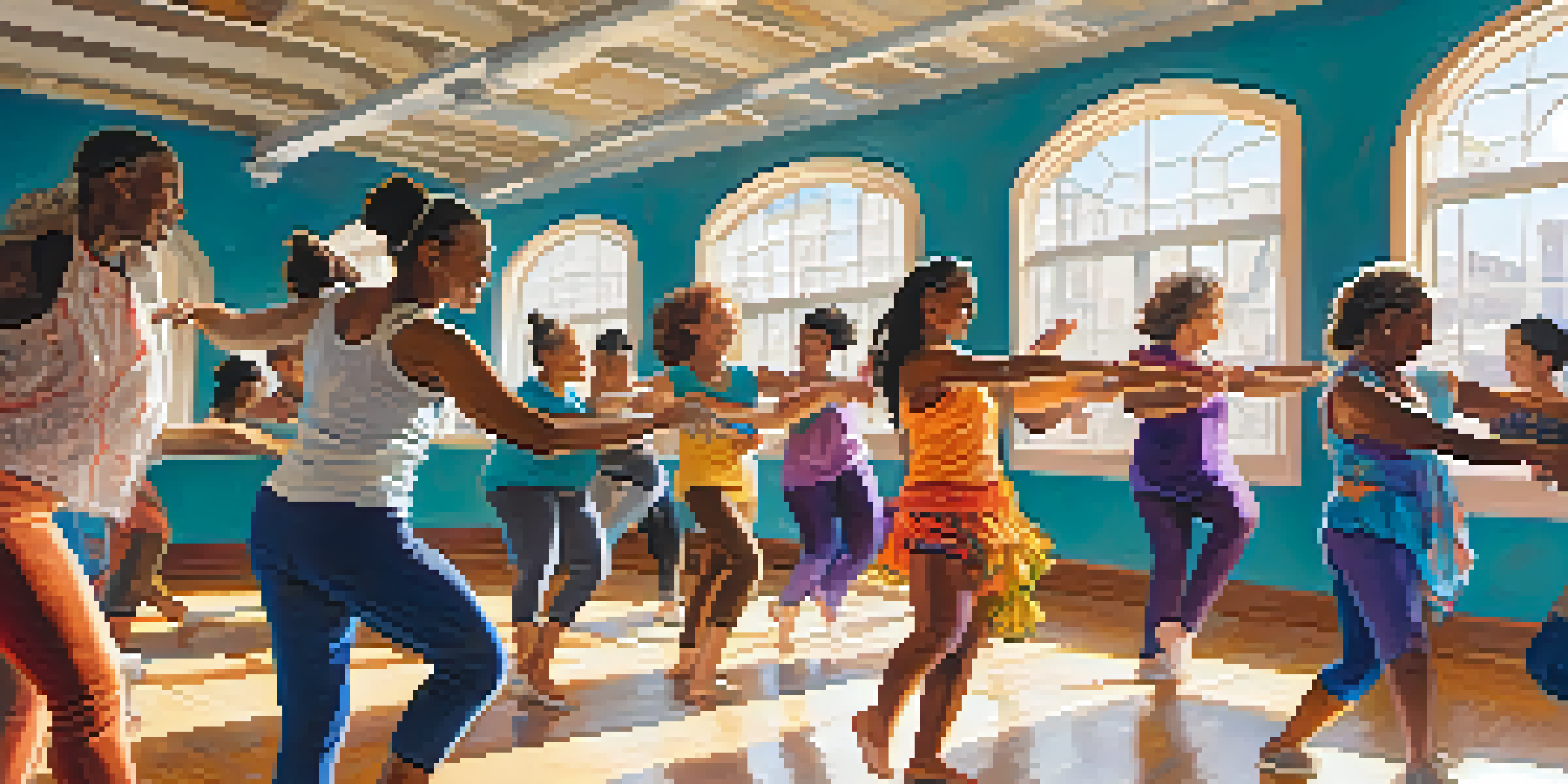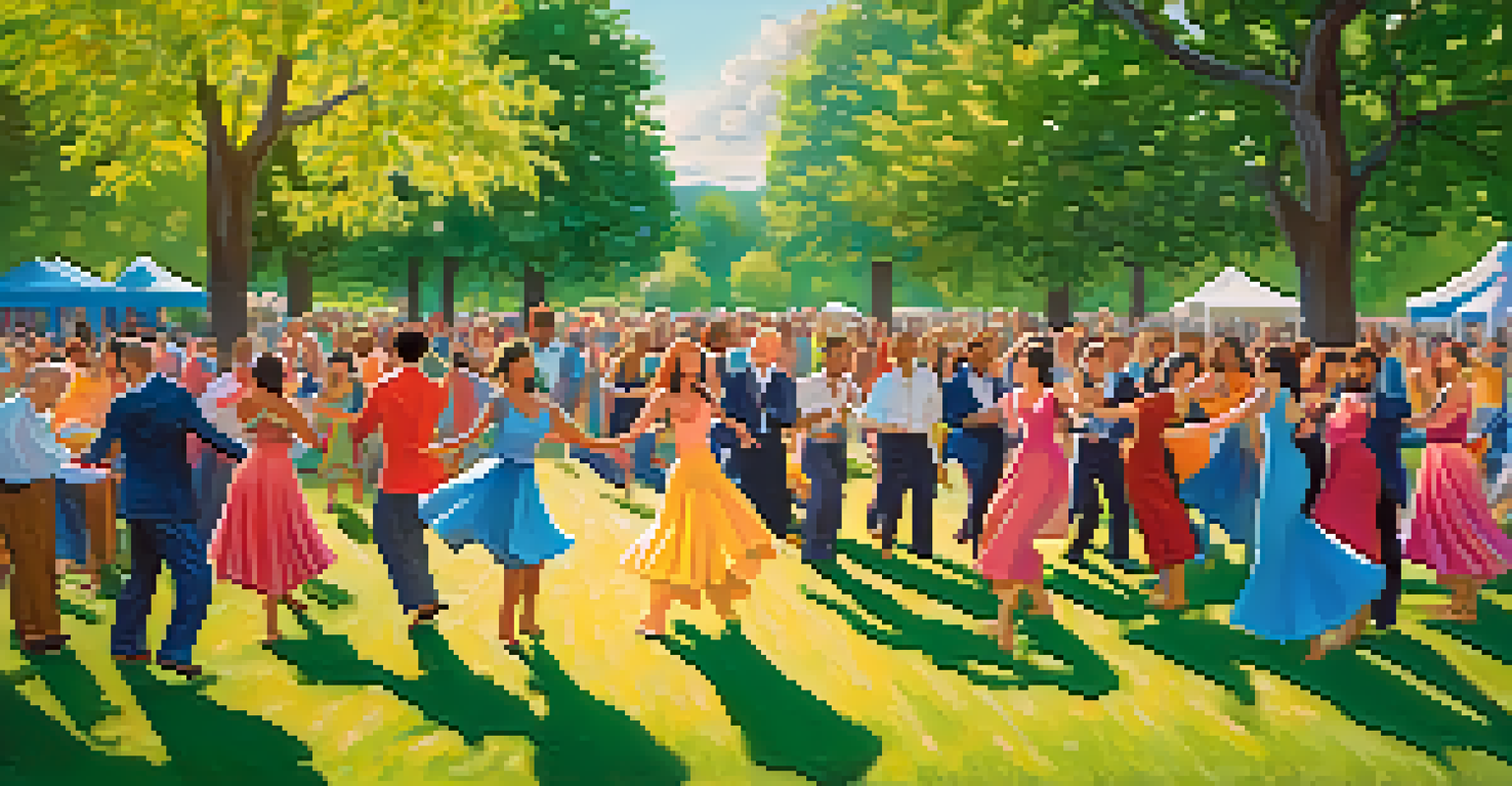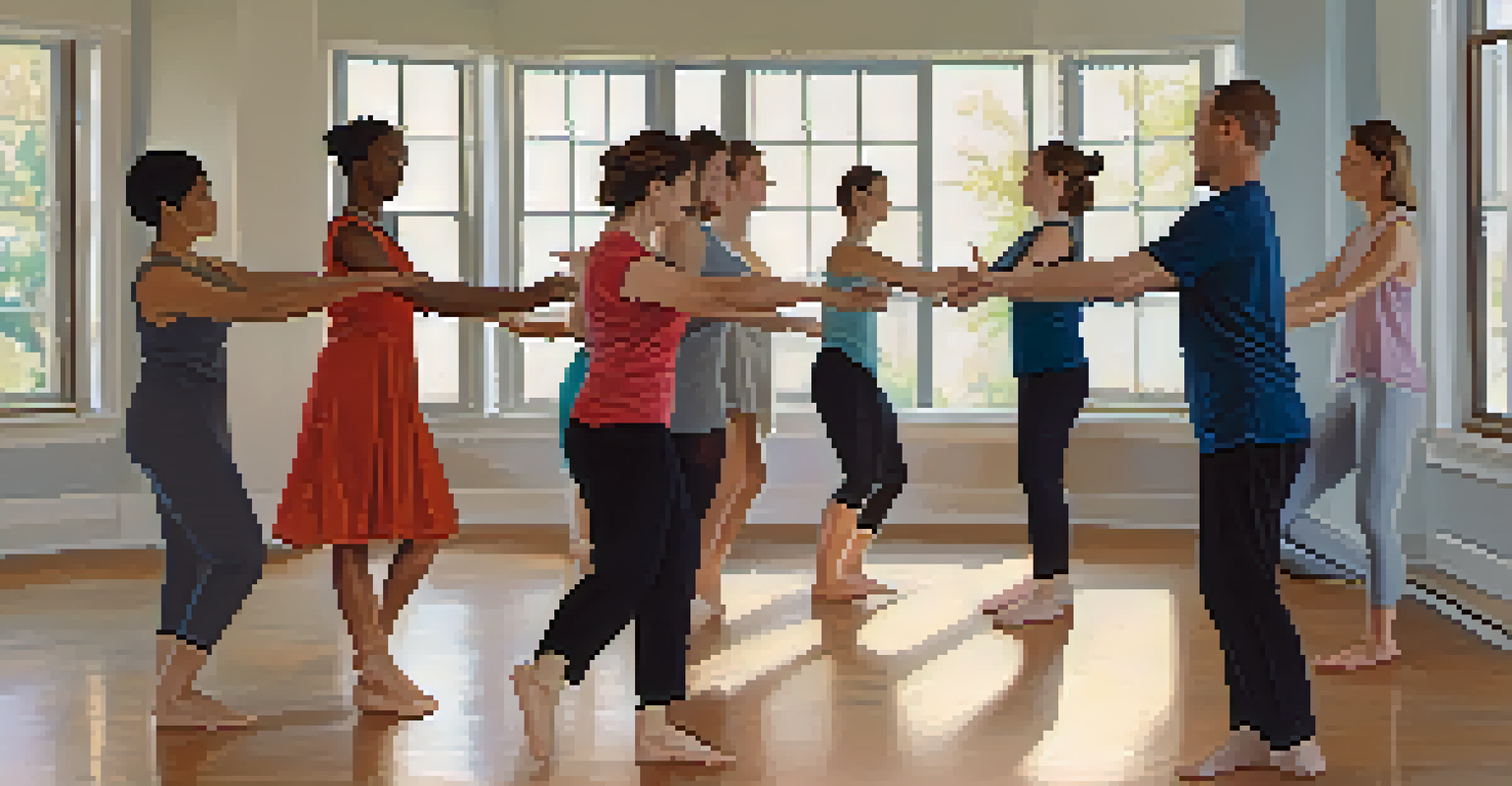Dance and Mental Health: Building Community Support Networks

The Connection Between Dance and Mental Health
Dance is more than just a physical activity; it’s an expressive outlet that can significantly boost mental health. Engaging in dance allows individuals to release emotions and reduce stress, leading to improved mood and emotional well-being. Studies show that movement can stimulate the release of endorphins, the body's natural feel-good chemicals, which can help combat feelings of anxiety and depression.
Dance is the hidden language of the soul.
Moreover, dance serves as a form of therapy, often referred to as dance/movement therapy. This approach enables participants to explore their feelings through movement, facilitating a deeper understanding of their emotions. By integrating physical movement with emotional expression, individuals can find relief and healing through the art of dance.
Additionally, dance provides a fun and creative way to engage with one's body, promoting self-esteem and confidence. As people learn new dance styles or improve their skills, they often experience a sense of accomplishment that can positively influence their mental state.
Building Community Through Dance
One of the most beautiful aspects of dance is its ability to bring people together. Group dance classes, community performances, and social dance events create opportunities for individuals to connect and share experiences. These communal settings foster a sense of belonging, which is crucial for mental health.

When individuals participate in group dance activities, they not only learn new skills but also form friendships and support networks. This camaraderie can be particularly beneficial for those feeling isolated or struggling with mental health challenges. The shared joy of dancing can help alleviate feelings of loneliness and promote a supportive environment.
Dance Boosts Mental Well-Being
Engaging in dance helps release emotions and reduces stress, leading to improved mood and emotional health.
Furthermore, these community dance events often celebrate diversity, allowing individuals from different backgrounds to come together. This inclusivity enhances social cohesion and encourages mutual support, creating a rich tapestry of connections that can uplift participants' spirits.
The Role of Dance in Mental Health Support Groups
Mental health support groups provide a safe space for individuals to share their struggles and triumphs. Integrating dance into these groups can transform the dynamics, making discussions more engaging and less intimidating. Movement can serve as an icebreaker, helping participants feel more comfortable expressing themselves.
Dancing is like dreaming with your feet.
In these settings, dance can be used as a tool for empowerment. Participants may be encouraged to express their feelings through movement, allowing them to communicate emotions that words alone cannot capture. This unique form of expression can lead to breakthroughs and deeper connections among group members.
Moreover, the act of dancing together in a support group reinforces the idea that no one is alone in their struggles. Witnessing others share similar experiences while moving to music can foster a sense of unity and hope, reminding participants that they are part of a larger community.
Dance Therapy: A Structured Approach
Dance therapy is a specialized field that focuses on using movement as a therapeutic tool. Certified dance therapists guide individuals through structured sessions that promote emotional, cognitive, and physical integration. This approach is particularly effective for addressing trauma, as it allows participants to process their experiences in a safe and supportive environment.
During dance therapy sessions, participants engage in improvisational movements, which encourages spontaneity and self-exploration. This process can help individuals reconnect with their bodies and emotions, often leading to significant healing and personal growth. It’s a powerful reminder that our bodies hold stories and that movement can be a pathway to understanding them.
Community and Connection Through Dance
Group dance activities foster a sense of belonging, helping individuals form friendships and support networks.
Additionally, dance therapy can be tailored to meet the needs of various populations, including children, adults, and those with specific mental health conditions. This flexibility makes it an accessible option for many seeking support and healing through movement.
Accessibility of Dance for Mental Health Benefits
One of the greatest advantages of dance is its accessibility. You don’t need to be a professional dancer or have extensive training to reap the mental health benefits that come from moving to music. Whether it's casual dancing in your living room or joining a local community class, anyone can participate and enjoy the positive effects of dance.
Various styles of dance cater to different preferences and abilities, making it easy for individuals to find a form that resonates with them. From ballet to hip-hop, salsa to contemporary, there’s something for everyone. This diversity ensures that dance can be a personal journey, tailored to individual comfort levels and interests.
Moreover, many organizations offer free or low-cost dance classes, making it even easier for people to access these beneficial activities. This affordability breaks down barriers, allowing more individuals to experience the joy of dance and its positive impact on mental health.
The Impact of Social Media on Dance Communities
In today’s digital age, social media has transformed the way dance communities form and thrive. Platforms like Instagram and TikTok allow dancers to share their passion with a wider audience, creating virtual communities that support and inspire one another. This online connection can provide a sense of belonging, especially for those who may feel isolated offline.
Social media also enables individuals to learn new dance styles through tutorials and challenges. This accessibility encourages people to explore dance as a form of self-expression, promoting mental health in a fun and engaging way. As more people embrace dance, the community continues to grow, fostering support and positivity.
Dance Therapy for Healing
Structured dance therapy sessions promote emotional healing, allowing participants to express feelings through movement.
However, it’s important to approach social media mindfully, as it can also lead to comparisons and self-doubt. Encouraging a healthy perspective on sharing and participating can help maintain the uplifting nature of these online dance communities, ensuring they remain supportive spaces for all.
Creating Lasting Connections Through Dance
Ultimately, dance is about connection—connection to oneself, to others, and to the rhythm of life. As individuals engage in dance, they foster relationships that can support their mental health and well-being. Whether through classes, performances, or social events, these connections create a network of support that can be invaluable during challenging times.
As people share their dance journeys, they often inspire one another, creating a ripple effect of positivity and encouragement. This shared experience can lead to lifelong friendships and a strong sense of community, all rooted in the joy of movement. It’s a beautiful reminder that dance can be a unifying force in our lives.

In conclusion, the intersection of dance and mental health highlights the profound impact of community support networks. By embracing dance as a means of connection and expression, individuals can cultivate resilience, find joy, and foster lasting relationships that uplift their mental well-being.